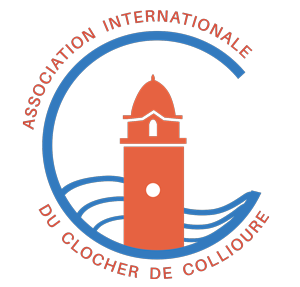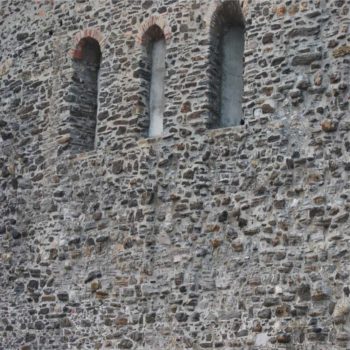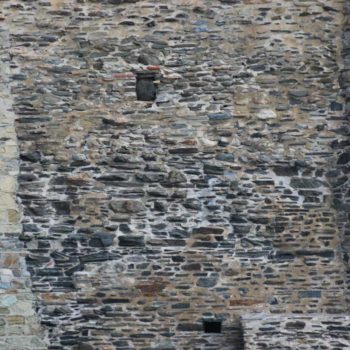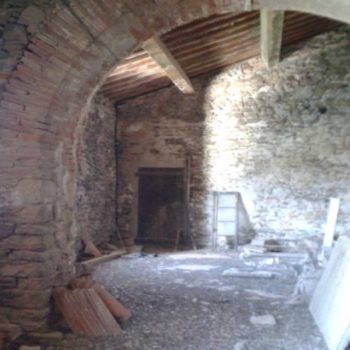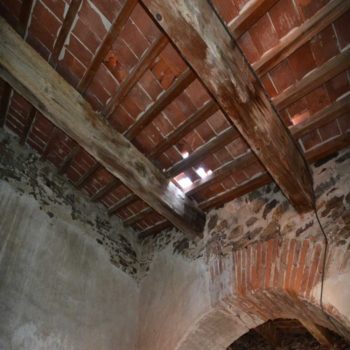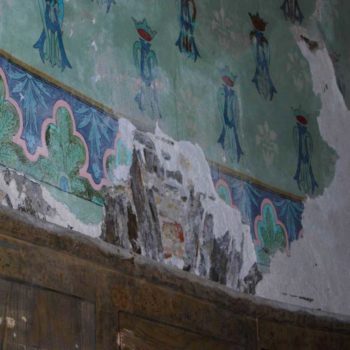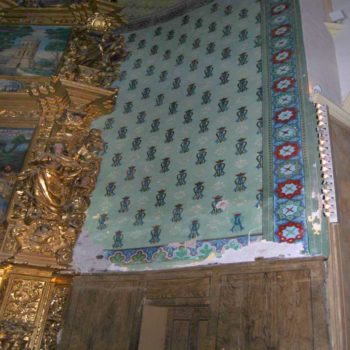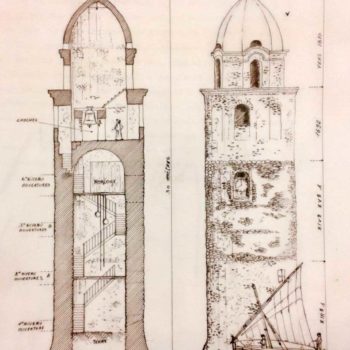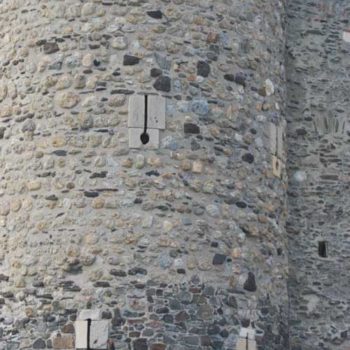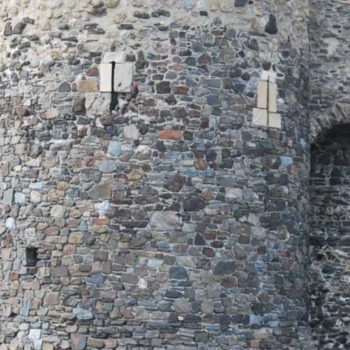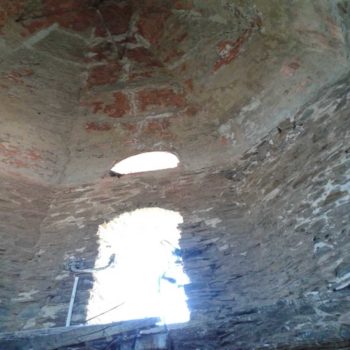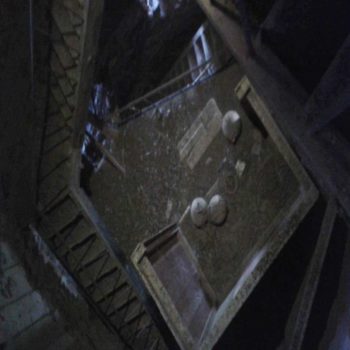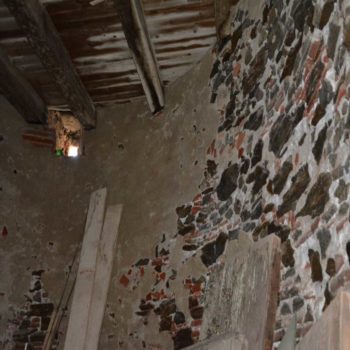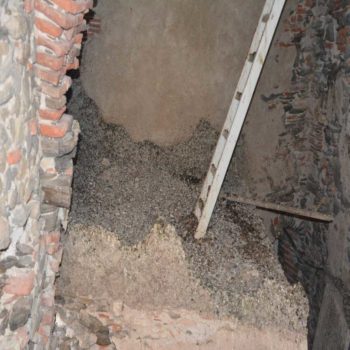With more than 300 years apart the observation of the state of the construction, including the foundations of the church, is the same. According to the records, at the time of its construction from 1684 to 1690, the site was permanently covered by seawater between two phases of works, namely the construction of the walls on a saline base. Olivier Weets, Chief Architect of the Monuments Historique, quotes in 2004: « The monument has benefited from several clean-up and out-of-water campaigns. Despite these various interventions, the problems due to the situation of the church whose east and south facades plunge into the sea persist: strong capillary rise of the sea. combining water and salt produces significant alterations to the masonry/stonework «
The report today is particularly severe on the east side of the building: outside along the nave, stones and bricks are laid bare, even more flagrant on the outer apse, the mortar that joins the stones has largely disappeared, demonstrating an important gap of 20 cm. The interior bedside is seriously affected, very visible on both sides of the altar with the endangerment of the altarpiece itself. The altarpiece is one of the jewels of Catalan and French Baroque art, the church is its setting and is one of those in Roussillon which houses the prestigious artworks of the genre such as that of Louis Genéres in Baixas, Lazare Tremullas in Perpignan and of course Josep Sunyer at Collioure (1702), Prades, or the hermitage of Font Romeu. A unique ensemble in the Mediterranean basin.

